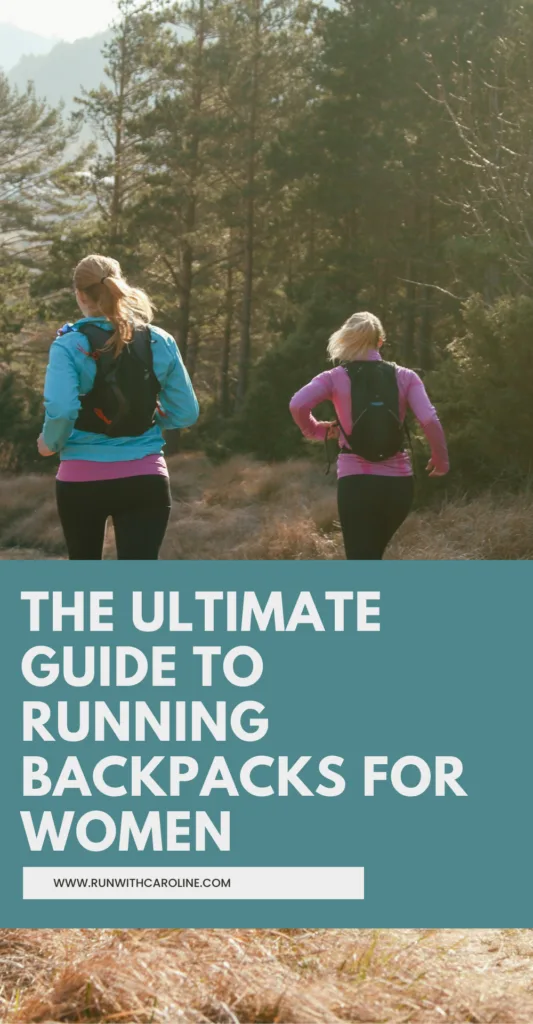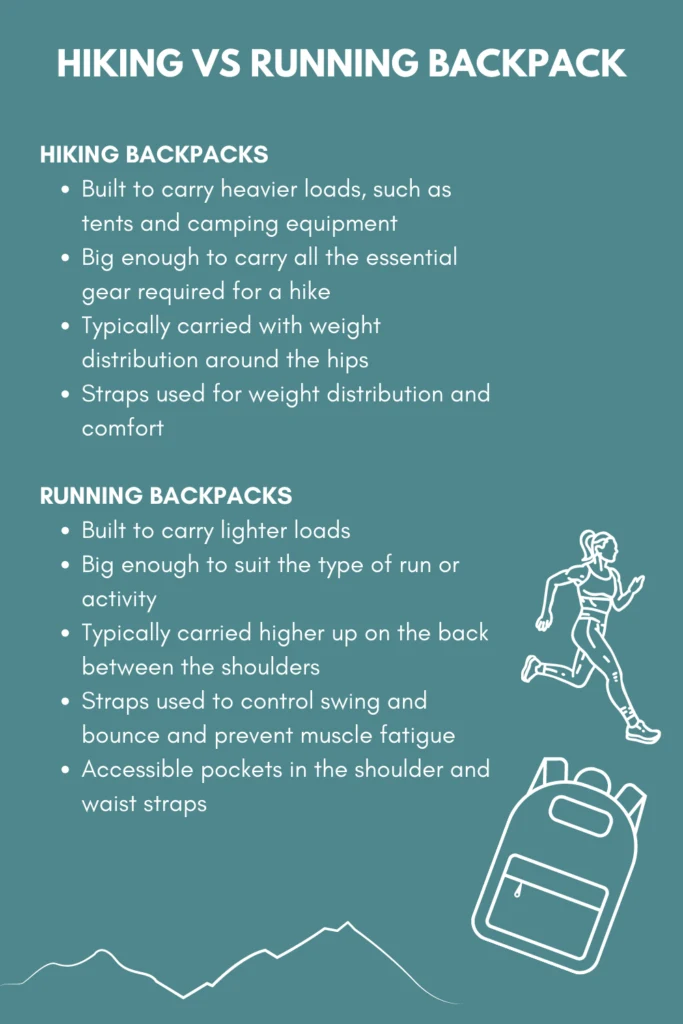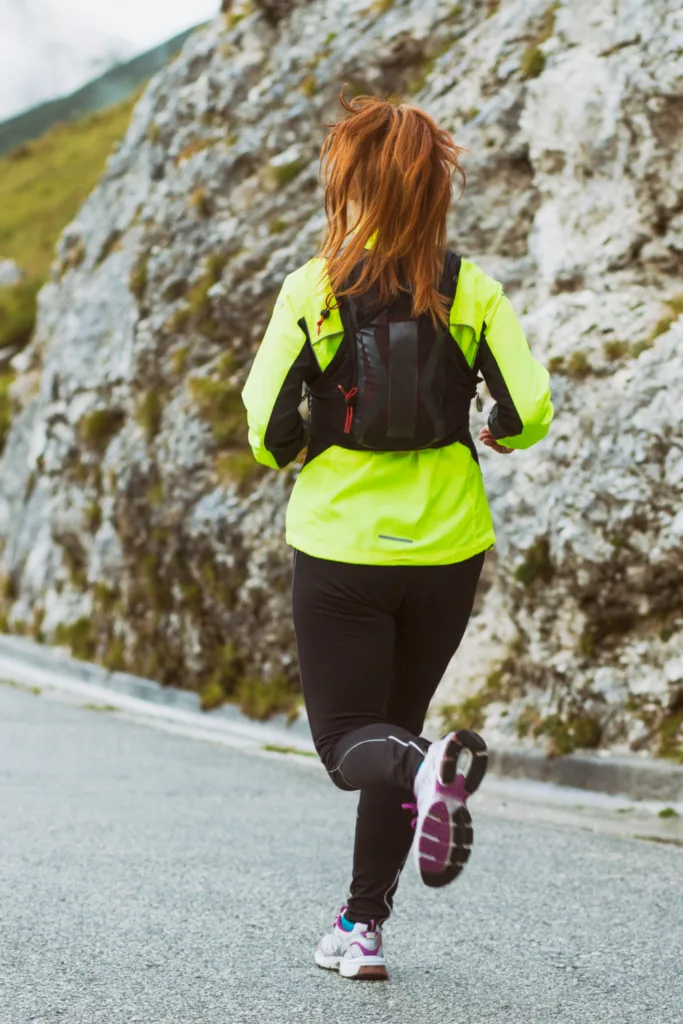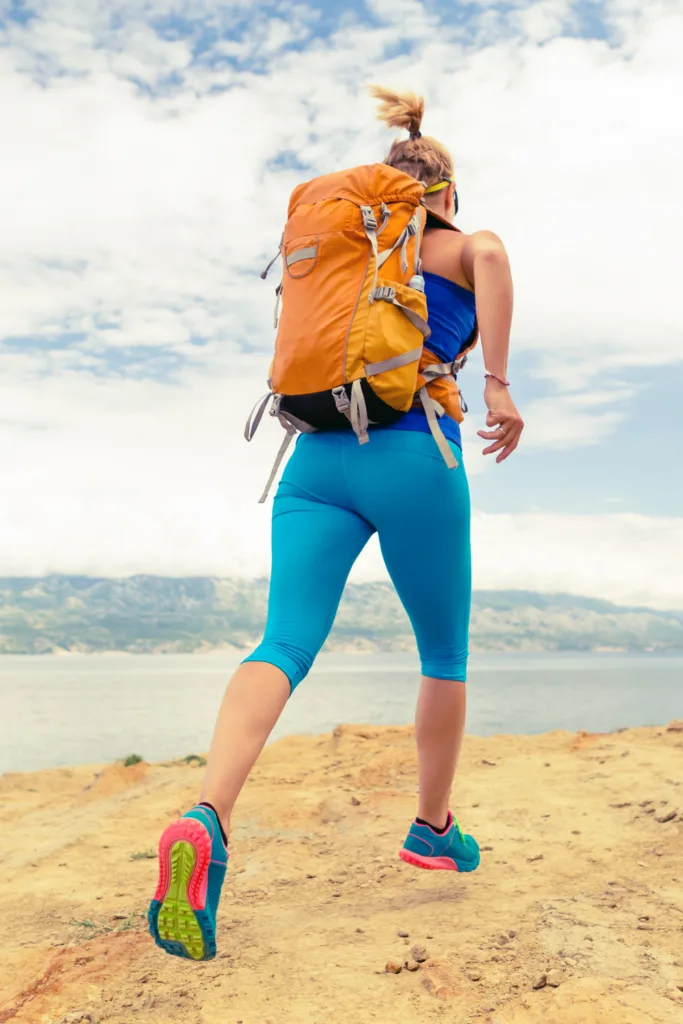What is the best running backpack for women?
This is a common question from female runners looking to invest in a good running backpack.
Oftentimes, running backpacks have been designed with the male body shape in mind.
The problem with this is that backpacks end up being too large and uncomfortable for female runners.
Anatomically, men and women are very different.
Men typically have proportionately more muscle mass, more bone mass and a lower percentage of body fat than men.
Factors like the size and fit of a bag and its weight distribution and comfort are therefore crucial when choosing a running backpack to make sure it’s suitable for a female runner.
So how exactly do you choose the best running backpack?
In this guide I will to provide you with everything you need to know when it comes to choosing the best running backpack if you’re a female runner.
We’ll look at:
- What is a running backpack?
- When to use a running backpack
- Men’s backpacks vs women’s backpacks
- Hiking backpacks vs running backpacks
- How to choose a running backpack
- Straps
- Size and fit
- Material and durability
- Storage capacity
- Weight distribution and comfort
- Style and design
- 5 of the best running backpacks for women
Ready?
Let’s go!

What is a running backpack?
A running backpack is a backpack that has been specifically designed to be worn on a run.
Don’t make the mistake of wearing any old backpack on a run.
Investing in a good running backpack is crucial in order to make your run comfortable and keep your belongings safe and accessible.
There are various types of running backpacks on the market today and the key is to pick one that suits your needs and body type.
After all, you don’t want to have to worry about the backpack bouncing around with every stride.
For the purposes of this guide I’ll be looking running backpacks, and not running vests, running hydration vests or running packs.
Related: 7 of the best websites to buy affordable running clothes
When to wear a running backpack
Running backpacks can be worn in a variety of situations and for a range of activities, not just running.
Most running backpacks start out as lightweight hiking backpacks.
A running backpack can be worn run commuting, long distance running, trail running and hiking.
Running to work, for example, has become increasingly popular over the last few years as people look for greener ways to travel to work.
Long distance runners and trail runners also wear running backpacks to store their valuables and essentials.
Related: Half marathon gear checklist: 6 running accessories for half marathon training
Men’s backpacks vs women’s backpacks
There are a few key differences between men’s and women’s backpacks.
Setting aside style and design, women’s backpacks tend to have:
- A shorter torso range
- Narrower and shorter shoulder straps.
- Shorter waist straps, and are sometimes shaped differently to account for women’s busts
- Smaller carrying capacities
This doesn’t mean that you should look exclusively at women’s backpacks in your search for your next bag.
Far from it.
Don’t get too hung up on gender specificity and spend time trying on different bags to understand which one is best for you.
Base your decision on what feels best, and not what the bag is marketed as.
Related: What does running do for your body? 10 benefits of running
Hiking backpacks vs running backpacks
The main difference between a hiking backpack and running backpack is storage capacity.
Hiking backpacks are designed for heavier loads whereas running backpacks have been built with lighter loads in mind.
Here are the key differences:
Hiking backpacks
- Built to carry heavier loads, such as tents and camping equipment
- Big enough to carry all the essential gear required for a hike
- Typically carried with weight distribution around the hips
- Straps used for weight distribution and comfort
Running backpacks
- Built to carry lighter loads
- Big enough to suit the type of run or activity
- Typically carried higher up on the back between the shoulders
- Straps used to control swing and bounce and prevent muscle fatigue
- Accessible pockets in the shoulder and waist straps
Related: 12 trail running tips for beginners

How to choose a running backpack
We’ve come up with a checklist to help you choose the best running backpack for you.
This checklist looks at the key factors when choosing a running backpack:
- Straps
- Size and fit
- Material and durability
- Storage capacity
- Weight distribution and comfort
- Style and design
#1 Straps
Straps on a running backpack and their location are incredibly important.
As you would do with a sports bra, it’s important you adjust these and make sure they meet your unique needs and body shape.
In most running backpacks, there are three different types of straps:
- Shoulder straps – used to hold the bag in place to reduce bounce and distribute the weight of the bag.
- Chest straps – used to take the weight off the backpack sitting on your shoulders and spread it evenly across your chest.
- Waist straps – used to hold the bottom of the bag in place.
Shoulder straps
The main shoulder straps should be padded, but not too bulky, and wide enough to distribute the weight of the bag.
Thin straps are more likely to dig into your shoulders and rub.
Shoulder straps should also be adjustable in length and feel comfortable when pulled tight to secure the bag.
Any discomfort or rubbing around the neck and shoulders when you pull the straps tight means you need to look for another bag.
Chest straps
Chest straps will help to take the weight off the backpack sitting on your shoulders and spread it evenly across your chest.
They also work to hold the bag in place when you run, therefore minimising bouncing and excessive movement.
As with the shoulder straps, they should be adjustable across the chest so that you can find the optimal fit.
For female runners, it’s key you find straps that sit comfortably across the chest and do not restrict movement.
This is especially important if you have a larger bust.
Most chest straps will have built-in elastic so that the tension of the strap can adjust with movement.
You don’t want to have to pull the chest strap too tight to hold the bag in place – the shoulder and waist straps will do this.
Waist straps
The waist straps are what hold the bottom of the backpack in place – this is typically the heaviest part of the bag.
It’s important the waist straps can easily extend around the torso and be wide enough to support the lower back and hips.
Waist straps should wrap around your hips like a belt.
Again, they should be adjustable and some brands will have built-in pockets in the waist straps to store valuables like keys and money.
Related: How should a sports bra fit? The complete guide
#2 Size and fit
As we explained earlier, there are lots of running backpacks on the market so it’s crucial you find one that suits your needs and body type.
This means researching the size and fit of each backpack to ensure it meets your unique set of needs and body shape.
It’s important to note that different brands may have different sizing, so refer to their specific sizing charts for accurate measurements.
Taking your own measurements can also be helpful to find the right fit.
It’s also important to look for bags that have been designed with a woman’s shape in mind.
But as we explained earlier, this shouldn’t be your only criteria. Some men’s or unisex backpacks may have exactly the right fit.
The smaller the bag the better, but this isn’t always feasible if you’ve got a lot of items to carry around.
Typically, a 20 litre storage capacity is a good starting point and most brands will offer backpacks around this mark.
When trying out a bag, make sure you adjust it and get a feel for the bag so that it compliments your natural posture and position.
Don’t adjust your posture to fit with the bag as this will cause all sorts of issues down the line.
Likewise, avoid hunching and rounding your back. Keep your shoulders back and your chin up.
The ideal position for the backpack should be on load-bearing areas, such as your shoulders and hips.
Try and get a snug fit as possible on these points.
Related: Moisture wicking underwear: Benefits + where to buy

#3 Material and durability
Durability and material are important factors to consider when finding a running backpack.
You’ll want to pick a backpack that is made out of sturdy, waterproof fabric so that it protects your belongings and valuables at the end of your run.
Nylon, polyester and polypropylene are common materials used in backpacks as they are durable and strong.
Some backpack manufacturers also use coatings, backings and different weaves to increase the strength and abrasion resistance of the materials.
Waterproof coating and laminate are also used to help keep backpacks dry.
Related: What to bring to the gym: 15 workout essentials
#4 Storage capacity
You don’t want to be caught out with a backpack that cannot accommodate all of your essentials.
So make sure you check the storage capacity of the backpack.
This will largely depend on what you plan to use the backpack for.
For example, if you want to use the backpack for your run commute, then you’ll want a backpack that can easily store a laptop and all your other essentials such as clothing and shoes.
As we explained earlier, the typical storage amount is 20 litres – so most brands will offer bags with storage around this mark.
You may also want to check that the bag can fit items like a water bottle and a pair of shoes.
Some bags offer flexible storage solutions such as expandable compartments and side pockets which are really useful for a range of storage requirements.
Related: Running with a dog: The best and worst dog breeds to go running with
#5 Weight distribution and comfort
Weight distribution and comfort are really important for balancing, saving energy, stabilising and preventing injury and complaints.
The last thing you want is a backpack that leaves your back sore from poor weight distribution.
Generally, running backpacks, unlike hiking backpacks, are not designed to carry lots of weight.
Heavy items should be packed as close to your back as possible at shoulder blade height.
By packing heavier items close to your back, you will need to use less energy to carry it. It will also increase stability.
The general rule of thumb is the more you carry, the more weight distribution becomes important.
Related: Jogger’s nipple: What is it and how to avoid it
#6 Style and design
Although not the most important factors on this list, style and design should still be a consideration.
If you prefer a style and design without any hooks and togs on the outside of the bag, then opt for a clean, classic design.
Whereas if you prefer a bag with lots of external pockets and togs, then a more utilitarian design might be for you.
Some backpacks even come with high-vis fabrics so you can be easily be seen at night.
The design you pick really depends on your personal preferences, but make sure it meets your needs.
Related: What is runner’s face? Causes + 10 prevention tips

5 of the best running backpacks for women
Now you know more about running backpacks, here are our top running backpacks for women.
#1 Osprey Skimmer 28 backpack (£90)
This bag from Osprey has been designed with a woman’s body shape in mind.
It has a classic design with a slender compartment that is large enough to hold all of your essentials.
The shoulder and waist straps on this bag are thinner to accommodate the female shape, which come in useful to minimise movement and friction.
The bag also comes with a hydration sleeve making it a perfect bag for longer distance runs and hikes.
The only downside is that this bag does feel pretty heavy when at full capacity, so take this into consideration if you’d prefer a more lightweight feel.
#2 Gregory Maya 16 backpack (£125)
The Gregory Maya 16 backpack is probably one of your favourite running backpacks for women.
The entire bag has clearly been designed with a female body shape in mind, and you can really tell when we took it out for a test drive.
Our favourite feature on this bag is the elasticated catch in the main external compartment which is useful to hold bulkier items like shoes and helmets.
The dual external side pockets are also really handy as they can hold small and large water bottles alike.
Other things you can hold in this backpack: sunglasses on the shoulder harness, bike light in the safety light lash and a hiking pole on the trekking pole attachment system.
#3 Osprey Tempest 20 backpack (£130)
The second Osprey backpack on this list is the Osprey Tempest 20 backpack.
This backpack is lightweight and designed for dynamic movement – making it a perfect running backpack.
The shoulder straps on this bag are what make it a winner – they have been designed with the female shape in mind.
It also has multiple expandable pockets and external attachment points which come in useful if you’re carrying lots of items.
With a 20 litre capacity, this bag has more than enough storage to hold your laptop and other essentials.
#4 Proviz Reflective360 running backpack (£49.99)
This backpack from ProViz is the best on the market for its reflective properties.
It’s a lightweight but spacious bag with zip pockets and adjustable chest and waist strap for easy and accessible storage.
At 10 litres, it isn’t the largest bag on this list, but if you’re looking for a lightweight and dynamic bag, then this is for you.
#5 OMM Ultra 15 backpack (£65)
This bag may not look like much on the face of it, but it’s a deceptively simple bag with a variety of hidden features.
It has a built-in whistle in the chest strap and numerous zipped and elasticated pockets for holding your valuables and essentials.
The 15 litre volume makes this bag perfect for your next run commute or long distance run.
Related: Can you workout after getting a tattoo? Everything you need to know
- 5 things I wish I’d known before returning to running - March 3, 2024
- Running 20 minutes a day: Benefits + how to start - January 27, 2024
- How to run your first 2 hour half marathon - January 16, 2024
